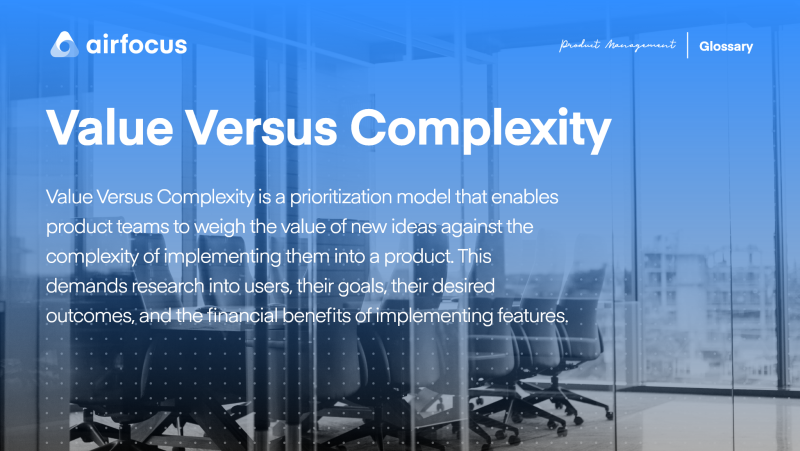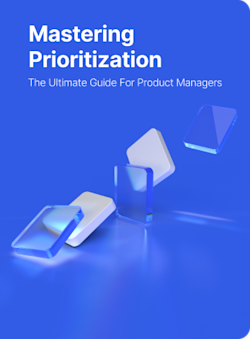Value Versus Complexity
What is value versus complexity?
Definition of value versus complexity
Value versus complexity is a prioritization model that enables product teams to weigh the value of new ideas against the complexity of implementing them into a product. This demands research into users, their goals, their desired outcomes, and the financial benefits of implementing features.
When utilizing the value versus framework, value refers to both the benefits to the product’s users and the business overall.
For example: will a feature make the user’s life easier? Will it have widespread relevance, or will only a niche segment of the customer base finds it useful? Is there a clear gap in the market that you can fill just by adding one or two specific features? Will these features give the product a stronger competitive edge and help to attract newcomers?
Download Now: Get our eBook on Mastering Prioritization
Complexity is based on a number of factors. These may seem minor individually, but add up to significant investment and potential disruption when combined.
The following may all contribute to a feature’s complexity: the number of hours required to develop it, all related operational costs, the level of risk (such as the feature becoming outdated within a short period), and the impact of bringing developers off different products or even from outside to complete the feature.
The aim of the value versus complexity model is to identify which features offer the highest value with the lowest level of complexity, and vice versa. Product teams can incorporate their results into their roadmap, to prioritize the most important features and ensure they receive the development time & resources required to achieve the best results.
Value versus complexity is different from value versus effort, which assesses ideas via a more simple view of the hours, weeks, months, or manpower required, check out this template to see how it works.
https://www.youtube.com/watch?v=wjQRFnT3Xdg&t
How can product teams measure value versus complexity?
The value versus complexity matrix is a simple but effective tool for determining priority features. It’s a basic quadrant with a vertical axis denoting ‘value’ and the horizontal representing complexity. Add "low" at the bottom of the vertical axis and "high" at the top. Do the same on the horizontal axis, moving from left to right.
Each feature should be assigned a place on the quadrant depending on the value and complexity the product team has assigned to it. This process takes time and consideration from the product team, as well as others from across other departments.
For example, managers and marketing teams might offer valuable input when discussing operational costs or reaching new audiences.
A feature’s position on the quadrant reveals its overall worth. Those with a high value and high complexity will demand more time to get right, so they should be prioritized for completion ahead of the others. Features with a high value and a low complexity are priorities but will be quicker and easier to complete.
Features with high complexity and low value, though, can be inserted further along with the roadmap or left out entirely.
The value versus complexity model enables product teams to recognize which features have the potential to bring the most positive results, and the complexity involved in implementing them. Product managers can use this information to allocate developers, resources, and time to the highest-priority features.
As a result, the most valuable elements of a product will receive the attention they require and, ideally, ensure the highest satisfaction among users.

General FAQ

Glossary categories
Prioritize with confidence

Experience the new way of doing product management








